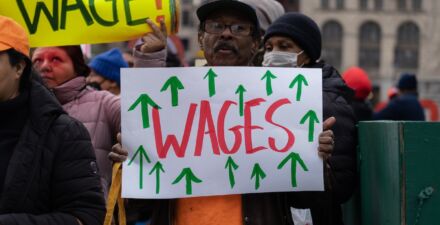Minimum wage effects and monopsony explanations
030524-WP-Minimum-wage-effects-and-monopsony-explanations-Wiltshire-McPherson-and-Reich-Sosinskiy
This working paper was updated on March 5, 2024 with a new version and an additional author.
Authors:
Justin Wiltshire, University of Victoria
Carl McPherson, University of California, Berkeley
Michael Reich, University of California, Berkeley
Denis Sosinskiy, University of California, Davis
Abstract:
We present the first causal analysis of a seven-year run-up of minimum wages to $15. Using a novel stacked county-level synthetic control estimator and data on fast-food restaurants, we find substantial pay growth and no disemployment. Our results hold among lower-wage counties and counties without local minimum wages. Minimum wage increases reduce separation rates and raise wages faster than prices at McDonald’s stores; both findings imply a monopsonistic labor market with declining rents. In the tight post-pandemic labor market, when labor supply becomes more elastic, we find positive employment effects. These become larger and statistically significant after addressing pandemic-response confounds.


